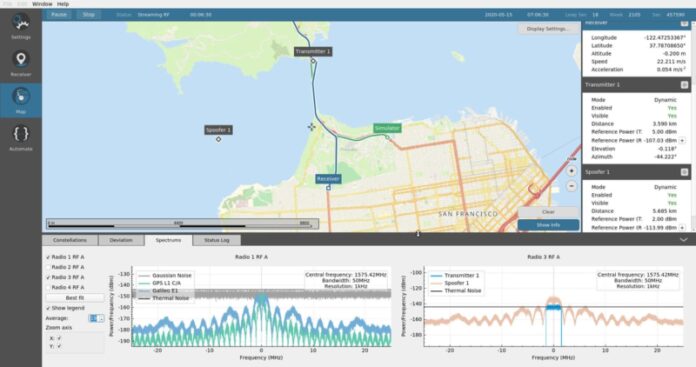Orolia, a Safran Electronics & Defense company, has announced that Skydel, its flagship GNSS simulation engine software, can generate more than 500 signals from a single platform. By leveraging its software-defined architecture, Skydel’s potential can be massively scaled upwards when employing a robust set of hardware components. GNSS users, experts, and manufacturers, as well as those looking for an LEO-capable simulation system, can greatly benefit from this unmatched number of signals.
“GNSS chipset, cellular handset, and GNSS receiver manufacturers have been looking for a robust solution that can generate a very high capacity of signals — with all the constellations and multiple frequencies – from a single workstation. Skydel gives them that capability,” explained Pierre-Marie Le Veel, Orolia’s Simulation Product Director. “With the right hardware, Skydel is the first high-capacity GNSS simulator on the market that can also accurately generate advanced multi-path, jamming, spoofing, or the high number of signals and frequencies needed for a true LEO constellation simulation.”
Skydel contains a rich feature set that includes multi-constellation/multi-frequency signal generation, remote control from user-defined scripts, and integrated interference generation. However, one of Skydel’s greatest assets is its open, software-defined architecture.
“Skydel’s software-defined GNSS simulation approach is just the tip of the iceberg,” added Le Veel. “With more and more customers simulating multi-path and jamming scenarios, and the need for more signals in more applications –even beyond traditional simulators – the need for high-capacity has never been greater. The Skydel engine opens the possibility for users to escalate to over 1000 signals and not be limited by hardware design.”
In addition to generating a high channel/satellite count, Skydel can also produce navwar signals without any additional hardware. Since 2015, Skydel software has been used to simulate GNSS signals for a wide range of applications and business segments including automotive, aerospace, space, telecommunications, and defense.
Safran is an international high-technology group operating in the aviation (propulsion, equipment and interiors), defense and space markets. Its core purpose is to contribute to a safer, more sustainable world, where air transport is more environmentally friendly, comfortable and accessible. Safran has a global presence, with 83,000 employees and sales of 19.0 billion euros in 2022, and holds, alone or in partnership, world or regional leadership positions in its core markets. Safran is listed on the Euronext Paris stock exchange and is part of the CAC 40 and Euro Stoxx 50 indices.
Safran Electronics & Defense is an international company with 10,000 employees, built on proven expertise in technologies that underpin sovereignty. By combining human and artificial intelligence, the company develops the products and services that empower aerospace and defense players to observe, decide and guide. Safran Electronics & Defense also supports fellow Safran companies by sharing its state-of-the-art electronics skills and expertise.



